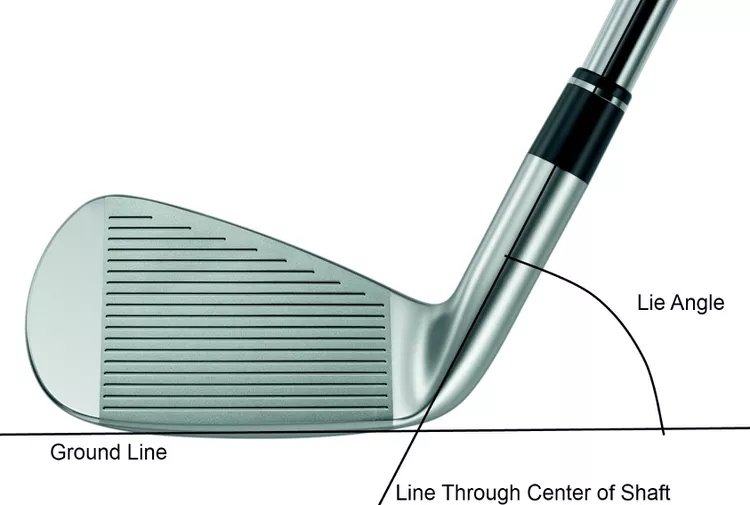Understanding Lie Angles in Golf Clubs
What is Lie Angle?
The “lie angle” of any golf club is the angle formed between the center of the shaft and the sole, or ground line, of the club when the club is soled in its proper playing position (as at address). Picture the club properly soled on flat ground, with a straight line extending back from the heel of the club along the ground. Now imagine measuring the angle from that line up to the shaft. That’s the lie angle.
Lie angle is a factor that affects the accuracy of golf shots. Golfers who use clubs whose lie angles don’t fit their body type and/or golf swing may be costing themselves important strokes. Therefore, matching the lie angle of clubs to the specific golfer is one of the goals of a club fitting session.
Typically, lie angles range from mid-50 degrees (in drivers) to mid-60 degrees (in short irons). In irons, the range usually goes from 59 or 60 degrees to around 64 degrees. Notably, lie angles on putters can reach into the 70s.
‘Flat’ and ‘Upright’ Are Important Adjectives for Lie Angles
Lie angle is an essential factor in club fitting, ensuring that golf clubs properly fit the body and swing of the golfer. Important terms related to lie angles include:
- Standard lie angle: This is the angle that off-the-shelf golf clubs are designed with.
- Flat lie angle: A lie angle that is lower than the standard lie angle (for example, a 62-degree lie angle on a 9-iron is flatter than the standard 9-iron lie angle of around 64 degrees).
- Upright lie angle: A lie angle that is higher than the standard (for instance, a 66-degree lie angle on a 9-iron is more upright than the standard 9-iron lie angle of around 64 degrees).
You might hear a golfer or club fitter mentioning, “You need flatter lie angles on your irons,” or “I had my irons bent 1-degree upright.”
The Impact of Lie Angle on Golf Shots
The lie angle of your clubs must fit your game, swing, and body. If the lie angle is incorrect, issues with accuracy can occur, regardless of how well you swing the club.
When the lie angle is ill-suited, it often results in pushes, pulls, and other mishits. Tom Wishon, a longtime golf club designer and manufacturer’s founder of Tom Wishon Golf Technology, provides insights on this topic:
“The lie angle is considered to be perfect for the golfer when the sole arrives at impact perfectly parallel to the ground.”
“If the lie angle is incorrect for the golfer, such that the toe of the clubhead is tilted well up in relation to the heel, the face is automatically pointing to the hook side of the target line. Conversely, if the clubhead arrives at impact tilted with the heel well up compared to the toe, the face of the clubhead is pointing to the slice side of the target line.”
To visualize this, consider:
- If the toe of the club is up (relative to the heel) at impact, the clubface will point to the left (for a right-handed golfer).
- If the heel is up (relative to the toe) at impact, the clubface will point to the right (for a right-handed golfer).
A toe-up position at impact indicates that the lie angle might be too upright, while a toe-down position suggests that the lie angle might be too flat. Moreover, your divots can also provide clues regarding lie angles. For example, if your divots are deeper on the toe side than the heel side, this may indicate that your lie angles could be too flat or too upright.
Lie Angles Checked During Clubfitting
If you suspect that the lie angles on your golf clubs may be ill-fitting, it is advisable to consult a club fitter. The club fitter will evaluate you and your clubs by taking measurements and analyzing your swings. If there are issues with the lie angles, most (but not all) irons can be adjusted at the hosel to increase or decrease the lie angle.
If you are serious about golf and want to maximize your scoring ability, visiting a club fitter prior to purchasing new clubs is a wise decision. Determine whether you need upright or flat lie angles; this insight could save you from unnecessary expenses on new clubs.





